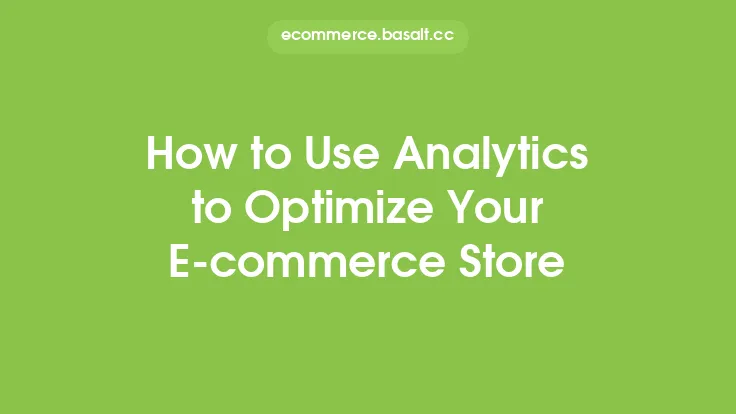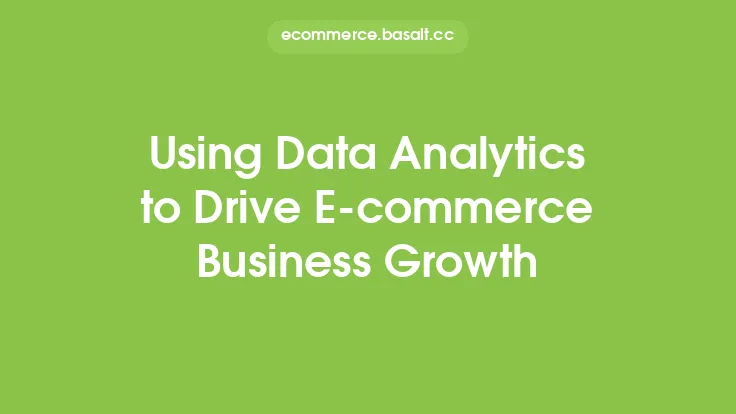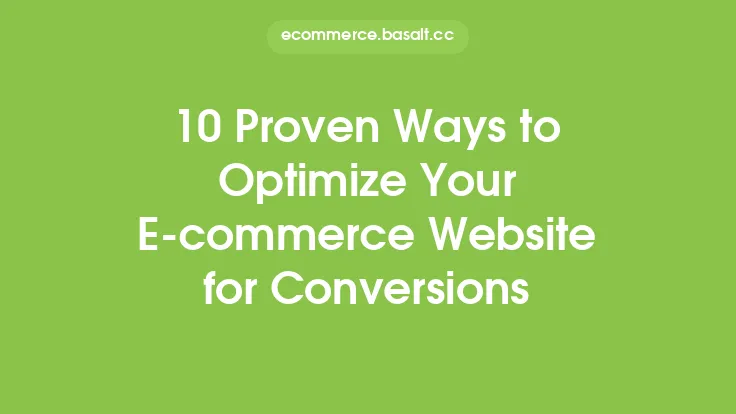To optimize e-commerce conversion rates, it's essential to understand the importance of analytics in the e-commerce landscape. Analytics provides valuable insights into customer behavior, helping businesses identify areas of improvement and make data-driven decisions to increase conversions. In this article, we'll delve into the world of e-commerce analytics, exploring how to use data to optimize conversion rates and drive business growth.
Introduction to E-commerce Conversion Rates
E-commerce conversion rates refer to the percentage of website visitors who complete a desired action, such as making a purchase, filling out a form, or subscribing to a newsletter. A high conversion rate indicates that a website is effective in persuading visitors to take the desired action, while a low conversion rate suggests that there are barriers or obstacles preventing visitors from converting. By analyzing conversion rates, businesses can identify areas of improvement and make targeted changes to increase conversions and drive revenue.
Understanding the Customer Journey
To optimize conversion rates, it's crucial to understand the customer journey, from initial awareness to post-purchase engagement. The customer journey encompasses multiple touchpoints, including social media, email marketing, search engines, and the website itself. By analyzing customer behavior at each touchpoint, businesses can identify pain points, areas of friction, and opportunities to improve the customer experience. This can be achieved through tools such as customer journey mapping, heat maps, and session recording, which provide a visual representation of the customer's interactions with the website.
Identifying Key Conversion Rate Optimization (CRO) Metrics
To optimize conversion rates, businesses need to track and analyze key CRO metrics, including:
- Conversion rate: The percentage of visitors who complete a desired action.
- Bounce rate: The percentage of visitors who leave the website without taking any further action.
- Average order value (AOV): The average amount spent by customers in a single transaction.
- Cart abandonment rate: The percentage of customers who abandon their shopping carts without completing a purchase.
- Click-through rate (CTR): The percentage of visitors who click on a call-to-action (CTA) or link.
By monitoring these metrics, businesses can identify areas of improvement and make targeted changes to increase conversions.
Analyzing Website Data to Inform CRO Strategies
Website data provides valuable insights into customer behavior, helping businesses identify areas of improvement and inform CRO strategies. This can be achieved through tools such as Google Analytics, which provides detailed reports on website traffic, behavior, and conversion rates. By analyzing website data, businesses can identify:
- High-traffic pages with low conversion rates, indicating areas of friction or obstacles.
- Pages with high bounce rates, suggesting that the content or user experience is not engaging.
- CTAs or links with low CTRs, indicating that the messaging or design is not effective.
- Devices or browsers with low conversion rates, suggesting that the website is not optimized for these platforms.
Using A/B Testing and Multivariate Testing to Optimize Conversion Rates
A/B testing and multivariate testing are powerful tools for optimizing conversion rates. These techniques involve creating multiple versions of a webpage or element, such as a CTA or image, and testing them against each other to determine which version performs better. By using A/B testing and multivariate testing, businesses can:
- Identify the most effective CTAs, images, and messaging.
- Optimize website elements, such as layout, color, and typography.
- Improve the user experience, reducing friction and obstacles.
- Increase conversions and revenue.
Implementing Personalization Strategies to Enhance the Customer Experience
Personalization is a key strategy for enhancing the customer experience and increasing conversions. By using data and analytics to understand customer behavior and preferences, businesses can create targeted and relevant experiences that meet the customer's needs. This can be achieved through tools such as product recommendations, content personalization, and email marketing automation. By implementing personalization strategies, businesses can:
- Increase customer engagement and loyalty.
- Improve the customer experience, reducing friction and obstacles.
- Increase conversions and revenue.
Leveraging Machine Learning and Artificial Intelligence to Optimize Conversion Rates
Machine learning and artificial intelligence (AI) are powerful tools for optimizing conversion rates. These technologies can analyze large datasets, identify patterns, and make predictions about customer behavior. By leveraging machine learning and AI, businesses can:
- Predict customer behavior, such as purchase intent or churn risk.
- Identify high-value customers and create targeted experiences.
- Optimize website elements, such as CTAs and messaging, in real-time.
- Improve the customer experience, reducing friction and obstacles.
Best Practices for Implementing CRO Strategies
To implement effective CRO strategies, businesses should follow best practices, including:
- Conducting thorough research and analysis to understand customer behavior.
- Creating targeted and relevant experiences that meet the customer's needs.
- Using data and analytics to inform CRO strategies and measure success.
- Continuously testing and optimizing website elements to improve conversions.
- Implementing personalization strategies to enhance the customer experience.
By following these best practices, businesses can increase conversions, drive revenue, and achieve long-term growth.
Conclusion
Optimizing e-commerce conversion rates requires a deep understanding of customer behavior, website data, and analytics. By using tools such as A/B testing, multivariate testing, and machine learning, businesses can identify areas of improvement and make targeted changes to increase conversions. By implementing personalization strategies and leveraging data and analytics, businesses can create targeted and relevant experiences that meet the customer's needs, driving revenue and long-term growth.





